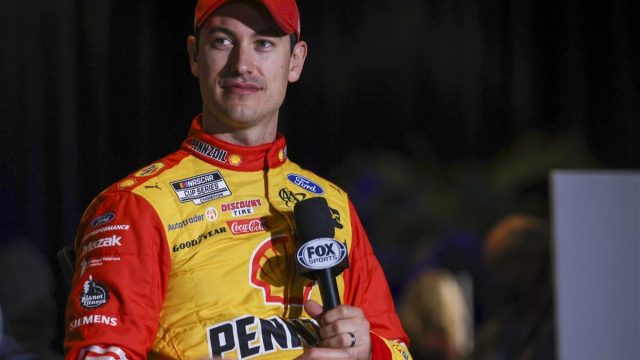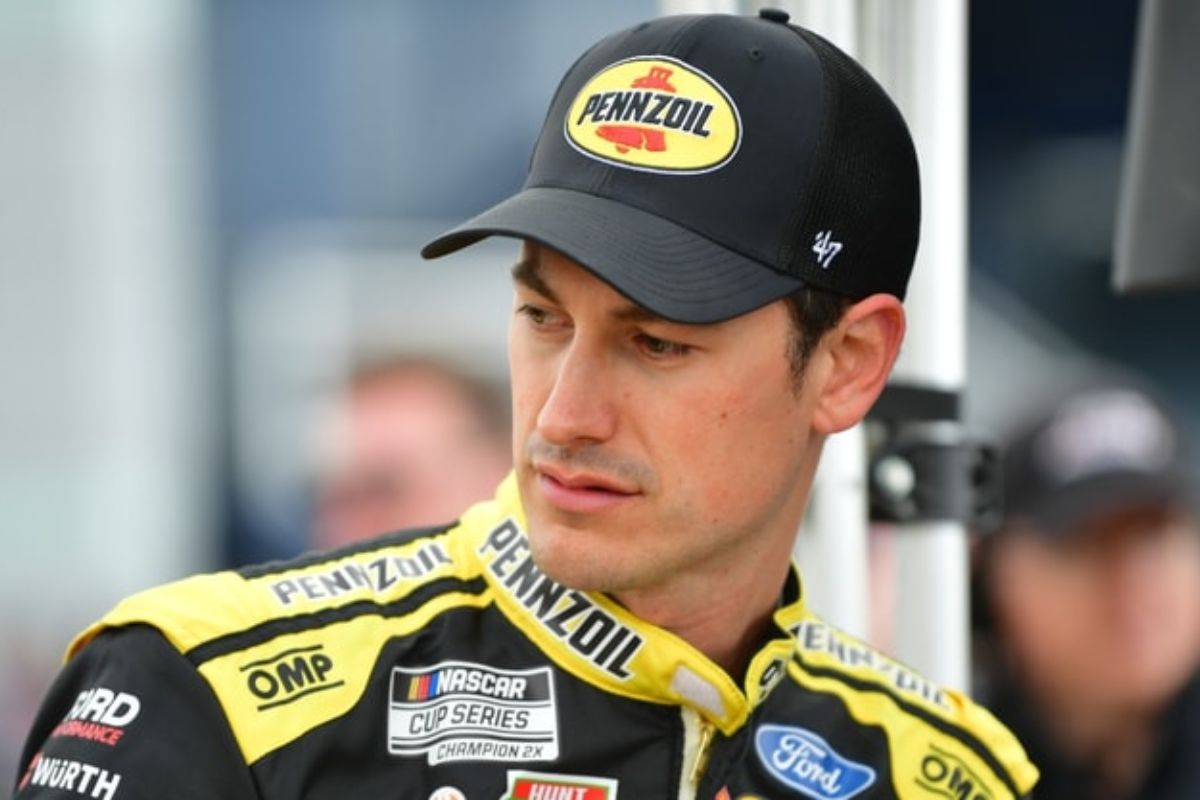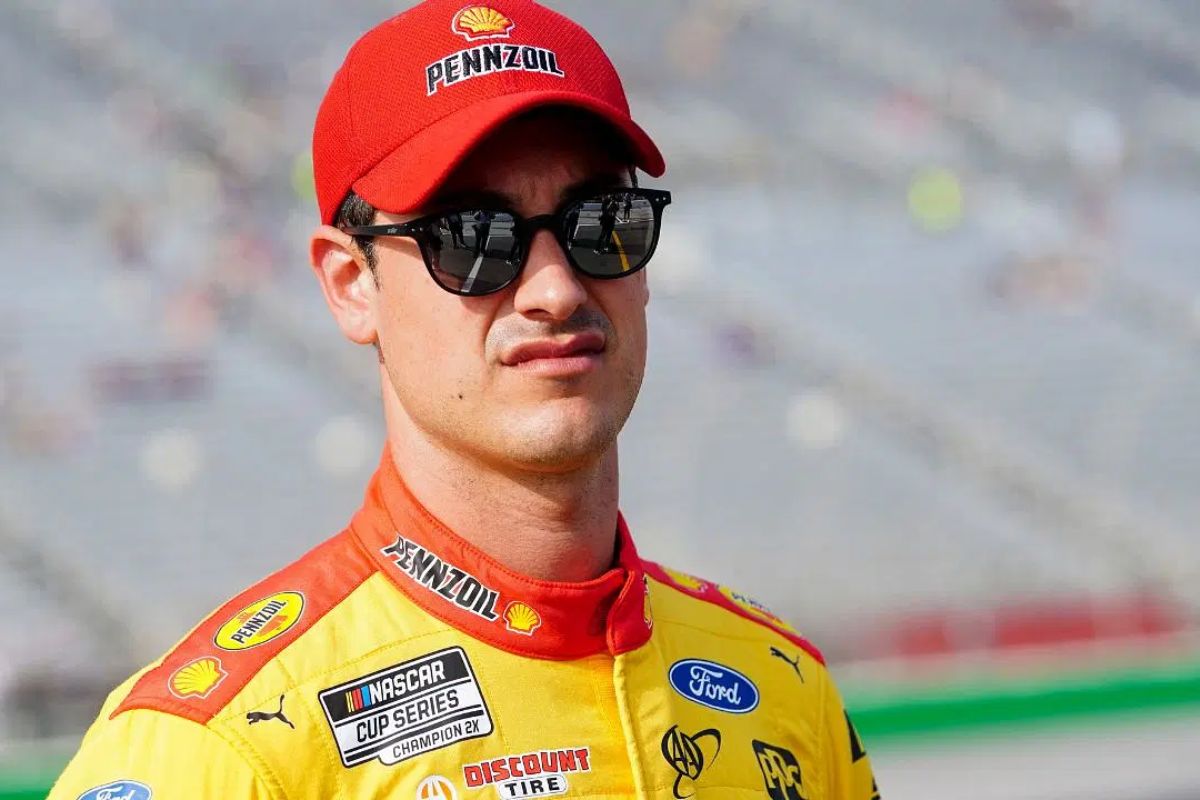Joey Logano Exposes Goodyear’s Bristol Secret: In an industry where every detail can be the difference between victory and defeat, Joey Logano’s recent revelations about Goodyear’s tire performance at Bristol Motor Speedway have ignited a profound discussion within the NASCAR community. Through a careful comparison with conditions at North Wilkesboro Speedway, Logano has highlighted the significant impact of cooler track temperatures on tire wear and the subsequent strategic implications for pit stops. As Logano pushes for immediate action, the implications for future short-track events are both vast and indeterminate, inviting a closer examination of what these developments mean for the competitiveness and spectacle of the sport.
Key Takeaways
- Joey Logano discovered accelerated tire wear at Bristol due to cooler temperatures affecting race strategy.
- Logano’s findings at Bristol contrasted with those at North Wilkesboro Speedway, highlighting temperature-dependent tire dynamics.
- Urging NASCAR to refine tire performance, Logano emphasized the need for alterations to tire compounds for better competition.
- Logano’s strategy at the Cook Out 400 involved extending left-side tire use, raising concerns about tire durability.
- Demanding for urgent NASCAR action, Logano calls for collaboration with Goodyear to improve short-track racing dynamics and tire integrity.
Short-Track Oval Racing: A Topic of Debate
Short-track oval racing, particularly within the NASCAR Cup Series, has recently emerged as a controversial subject, stimulated by performances at venues like Martinsville that have prompted a reevaluation of race dynamics and tire wear strategies. The discussion has been amplified by the stark contrast in tire wear observed at different circuits.
The minimal tire wear experienced during recent races at Martinsville has become a focal point of this debate. Traditionally, tire wear is a critical factor in racing strategy, affecting pit stops, fuel management, and overall race pace. The expectation of significant tire degradation often leads teams to develop intricate strategies designed to maximize their performance while managing the wear on their tires. However, the weary displays at Martinsville, characterized by minimal tire wear, have challenged these conventional strategies.
For teams and drivers, the reduced emphasis on tire wear at certain tracks necessitates a reassessment of race strategies, potentially favoring different skill sets and vehicle setups. For tire manufacturers like Goodyear, the feedback from these events is invaluable for future tire development with the unique demands of each track.
Joey Logano’s Insight on Tire Wear at Bristol
Amid the ongoing debate surrounding tire wear in NASCAR Cup Series short-track oval racing, Joey Logano has provided key insights into the performance of Goodyear tires at Bristol, emphasizing the notable impact of cooler temperatures on tire degradation. Logano’s observations, derived from competitive races and extensive testing sessions.
It’s just the temperature was different right, cooler out at Bristol, and it created wear, and the same thing happened at the Wilkesboro test. It’s crazy to me that 10 degrees is everything, like we’re living on a fine line.”-(Joey Logano)
- Temperature Sensitivity: Cooler track temperatures significantly hasten tire wear, contrasting with the common perception that warmer conditions lead to quicker degradation.
- Comparative Analysis with North Wilkesboro: Logano parallels his findings at Bristol with similar testing outcomes at North Wilkesboro Speedway, suggesting a broader applicability of these insights across different tracks.
- Impact on Racing Strategy: The increased tire wear due to cooler temperatures necessitates a more nuanced approach to pit stop strategy, with teams needing to adapt their plans based on weather forecasts and track conditions.
- Technical Implications for Teams: Understanding the temperature-dependent nature of tire wear at Bristol allows teams to make more informed decisions regarding tire pressure adjustments and chassis setups to optimize performance.
Logano’s Call for NASCAR Intervention
In a decisive move, Joey Logano has publicly urged NASCAR to take immediate action in refining the tire performance issues plaguing short-track racing, specifically highlighting the necessity for alterations to tire. Logano’s call comes amid growing concerns over the current state of short-track racing, which, according to the seasoned driver, suffers from a lack of dynamic racing due to suboptimal tire performance.
“The last 20 laps, the left rear started coming apart, but it wasn’t because it wore off. The wear pins were still there. It started delaminating, like the tread started coming off. It didn’t wear down to the cords. The tire was fine outside of it chunking apart. That’s not OK.”
“In the morning, we went out there. It’s 50-something degrees, we run 25 laps, and we drop off almost a second. I was like, Whoa, it’s like real fall of here, tire is graining… And then, it got to about 11 o’clock in the afternoon, the sun came out, warmed up to 65 degrees or so. I’d run 25 laps and not fall off a tenth, but I was like what, the graining went away.”-(Joey Logano)
Logano’s perspective is not merely a reflection of personal grievances but rather an echo of a broader consensus within the racing community that tire compounds, particularly at short tracks, require urgent reassessment. This, in turn, would not only satisfy drivers’ quest for a more equitable racing environment but also enhance fan engagement and viewership metrics, important indicators of the sport’s health and vitality.
Logano’s Strategy and Tire Concerns at the Cook Out 400
In Cook Out 400 at Martinsville Speedway, Joey Logano’s tactical decision to extend the use of left-side tires until nearly the end of Stage 2 highlighted significant concerns regarding tire durability and performance, particularly when evidence of tire delamination emerged, despite the wear pins indicating otherwise.
- Tire Delamination: Despite minimal wear indicated by the pins, Logano’s tires began to delaminate, suggesting that external indicators may not fully capture the tire’s actual condition.
- Durability Concerns: The incident brings to light potential vulnerabilities in tire construction or composition, questioning if current materials can withstand the rigors of prolonged use under race conditions.
- Strategic Implications: Logano’s approach challenges conventional pit stop strategies, potentially shifting how teams manage tire wear over a race’s duration.
- Safety Considerations: Beyond performance, the situation emphasizes the paramount importance of tire integrity for driver safety, highlighting a need for continuous evaluation and possible innovation in tire technology.
Logano’s Plea for Immediate Action
Joey Logano’s crucial stance on the need for immediate action regarding tire compounds is a rallying cry for NASCAR to prioritize enhancements in short-track racing dynamics. His demand highlights the critical point at which the sport finds itself, with the quality of racing at stake.
“It’s pretty clear to me that NASCAR does not want to give us more horsepower… So, do something and do it now. Hurry up. Do it now. Try it. At any point, I think any of us would be willing to go test anywhere and do some crazy stuff and try it. We’ve just got to do something big now.”-(Joey Logano)
This approach calls for a careful evaluation of current tire compounds, a rigorous testing regime, and a collaborative effort with Goodyear to implement changes that could reshape racing dynamics, thereby ensuring a superior racing experience for competitors and fans.
News in Brief
The revelations by Joey Logano regarding tire wear dynamics at Bristol, in contrast to conditions at North Wilkesboro Speedway, highlight a critical aspect of short-track racing that demands immediate attention.
The impact of cooler temperatures on tire performance not only influences pit stop strategies but also affects the overall competitiveness and excitement of races.
This analysis serves as a call for NASCAR and Goodyear to address and correct tire performance issues, thereby enhancing the racing experience in short-track events.
Our Reader’s Queries
Q. What happened to Logano?
A. Joey Logano, representing Penske Racing, faced a $10,000 fine from NASCAR on Wednesday. This penalty followed his recent infraction during qualifying for the Ambetter Health 400 at Atlanta Motor Speedway, where Logano was penalized for employing an unauthorized left-handed webbed racing glove.
Q. How fast is Joey Logano?
A. During NASCAR Cup Series practice at Phoenix Raceway in Arizona on Friday afternoon, Joey Logano of Team Penske recorded the fastest lap. Piloting the No. 22 Ford, Logano clocked a time of 27.446 seconds, achieving a speed of 131.167 mph on the one-mile tri-oval track.
Q. Why is Joey Logano famous?
A. Joey Logano, representing Shell-Pennzoil and driving for Team Penske in NASCAR, boasts an impressive track record of accomplishments. Remarkably, at the age of just 18, he secured victory in a Nationwide Series race, cementing his status as the youngest driver to achieve such a feat.
Q. Did Joey Logano adopt a child?
A. Joey Logano and his wife, Brittany, take pride in their role as adoptive parents to Frankie, who brings joy with his playful demeanor. Beyond their family life, the couple is dedicated to philanthropy through the Joey Logano Foundation. This charitable endeavor aims to support children and young adults facing adversity, providing them with opportunities for a brighter future during challenging times.
ALSO READ: Joey Logano Alerts Drivers: NASCAR’s ‘Parity’ Threatens Race Strategy



